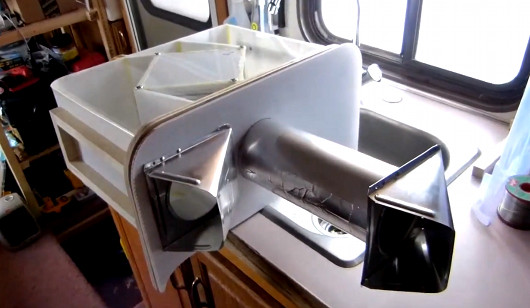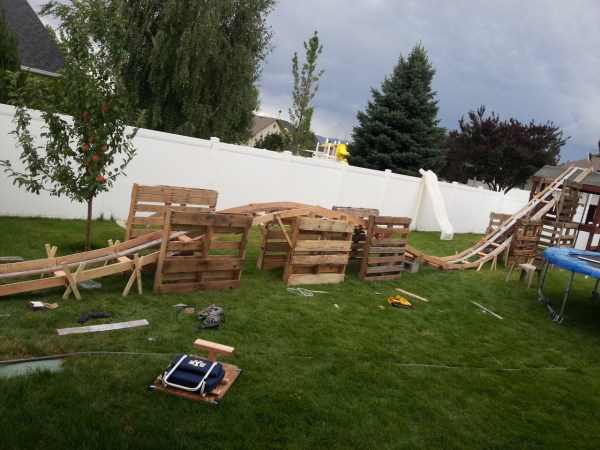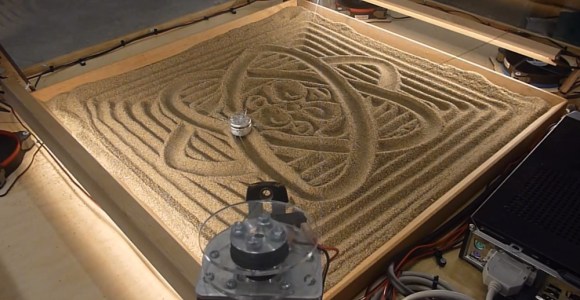When snow covers the landscape outside, you do your best to preserve the heat inside. [Tom] came up with a smart design for a solder fume extractor that includes a heat recovery ventilator. He created a housing which contains input and output sections. A fan is used to bring in outside air, passing it through a heat exchanger made of alternating panels of coroplast. (See diagrams of his setup after the break) This is really a simple design, and could be built in a couple of hours.
A little digging turns up some good information on making a heat exchanger like this one. [Tom] doesn’t mention the indoor temperature, so it’s difficult to calculate the efficiency he’s getting out of it. Apparently they can attain up to 70% heat transfer, depending on the size of the heat exchanger.
In the video, [Tom] mentions some obvious improvements that could be made, including more efficient fans, and a better housing that allows the core to be removed for cleaning. Still, this is a simple setup that provides a good proof of concept. Perhaps we’ll get to see a more permanent installation from [Tom] in the future.


















